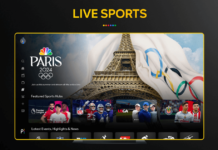Media plays a pivotal role in shaping the popularity, visibility, and global reach of sports. From traditional broadcasts to digital platforms, social media, and streaming services, the influence of media on sports extends far beyond the playing field. Let’s delve into the multifaceted ways in which media impacts the popularity of sports and contributes to their cultural significance.
Global Exposure and Accessibility
One of the primary ways media influences sports popularity is by providing global exposure and accessibility to audiences worldwide. Television broadcasts, live streaming services, and digital platforms make sports events accessible to fans across geographical boundaries, transcending cultural barriers and expanding fan bases.
Broadcast Partnerships: Major sports events, such as the Olympics, FIFA World Cup, Super Bowl, and Grand Slam tournaments, forge broadcast partnerships with media networks and streaming services, ensuring widespread coverage and exposure to millions of viewers globally.
Digital Platforms: Online streaming platforms, sports apps, and OTT (over-the-top) services offer live and on-demand access to sports content, allowing fans to watch games, highlights, interviews, and analysis anytime, anywhere, on multiple devices.
Social Media Amplification: Social media platforms like Facebook, Twitter, Instagram, and YouTube amplify sports content through viral sharing, real-time updates, fan engagement, user-generated content, and interactive experiences, reaching diverse audiences and driving engagement.
Storytelling and Narrative Building
Media plays a crucial role in storytelling, narrative building, and creating compelling narratives around sports personalities, teams, rivalries, and iconic moments. Through storytelling techniques, media captures the drama, emotion, and human interest aspects of sports, resonating with audiences and enhancing their connection to the game.
Player Profiles: Media profiles athletes, coaches, and personalities, sharing their journeys, challenges, triumphs, and personal stories, creating narratives that inspire, resonate, and humanize sports figures, building emotional connections with fans.
Team Rivalries: Media narratives around historic rivalries, intense matchups, and iconic moments in sports history add depth, excitement, and anticipation to games, fueling fan interest, rival fan interactions, and passionate support for teams.
Underdog Stories: Media highlights underdog stories, Cinderella runs, and unexpected victories, showcasing resilience, determination, and the power of sports to defy odds, capturing the imagination of fans and fostering emotional engagement.
Fan Engagement and Interaction
Media platforms facilitate fan engagement, interaction, and participation in sports culture, creating immersive experiences, community connections, and fan-driven content that contribute to the overall popularity and vibrancy of sports.
Fan Forums: Online forums, social media groups, and fan communities provide platforms for fans to discuss, debate, share opinions, and connect with like-minded enthusiasts, fostering a sense of belonging and camaraderie within sports fandom.
Interactive Content: Media platforms offer interactive content such as polls, quizzes, fan voting, fantasy sports leagues, and interactive broadcasts that engage fans, encourage participation, and enhance the overall viewing experience.
Behind-the-Scenes Access: Media provides behind-the-scenes access, exclusive interviews, locker room footage, and insider content that offer fans a glimpse into the inner workings of sports teams, personalities, and events, deepening their connection and interest.
Sponsorship, Marketing, and Revenue Generation
Media plays a crucial role in sports sponsorship, marketing, and revenue generation by creating valuable opportunities for brands, advertisers, and sponsors to connect with audiences, leverage sports partnerships, and reach targeted demographics.
Sponsorship Integration: Media integrates sponsorships, branded content, product placements, and advertising within sports broadcasts, digital platforms, and social media campaigns, creating synergistic partnerships that benefit both sports properties and sponsors.
Marketing Campaigns: Media platforms enable sports organizations, leagues, and brands to launch marketing campaigns, promotions, endorsements, and activations that leverage the popularity, excitement, and fan engagement around sports events and personalities.
Revenue Streams: Media rights deals, advertising revenues, subscription models, pay-per-view events, merchandise sales, and digital monetization strategies generate significant revenue streams for sports entities, broadcasters, and media partners, fueling the growth and sustainability of the sports industry.
Cultural Impact and Social Influence
Media shapes the cultural impact and social influence of sports by reflecting societal values, promoting diversity, driving conversations around social issues, and leveraging sports platforms for advocacy, awareness, and positive change.
Representation and Inclusion: Media promotes representation and inclusion in sports by showcasing diverse athletes, celebrating cultural heritage, and highlighting stories of empowerment, equality, and social progress within the sports community.
Social Advocacy: Media platforms amplify social advocacy efforts, support charitable initiatives, and raise awareness about important causes through sports partnerships, campaigns, fundraising events, and philanthropic activities that leverage the influence of sports for social good.
Cultural Moments: Media captures cultural moments, milestones, and historic events in sports history that resonate with audiences, spark conversations, and become part of collective memory, contributing to the cultural legacy and significance of sports in society.
Future Trends and Innovations
Looking ahead, the future of media in sports will continue to evolve with emerging trends and innovations such as:
Immersive Technologies: Virtual reality (VR), augmented reality (AR), and 360-degree video experiences will offer immersive sports content, interactive viewing experiences, and virtual fan engagement opportunities.
Personalized Content: AI-driven algorithms, data analytics, and machine learning will enable personalized sports content, tailored recommendations, and customized viewing experiences based on individual fan preferences and behavior.
Live Streaming and OTT: The rise of live streaming, over-the-top (OTT) services, and digital platforms will reshape sports broadcasting, content distribution, and audience engagement, providing flexibility, convenience, and accessibility to fans worldwide.
Social Media Integration: Social media platforms will deepen integration with sports content, offering live streaming, interactive features, real-time engagement tools, and social commerce opportunities that enhance fan connectivity and interaction.
Conclusion
The influence of media on sports popularity is a dynamic and multifaceted phenomenon that shapes the way we experience, engage with, and celebrate sports culture. From global exposure and storytelling to fan engagement, sponsorship, cultural impact, and technological innovations, media platforms play a central role in elevating the visibility, reach, and significance of sports in society. As media continues to evolve and embrace new technologies, trends, and audience preferences, the future promises exciting opportunities for sports media to enhance the fan experience, drive positive social impact,






















